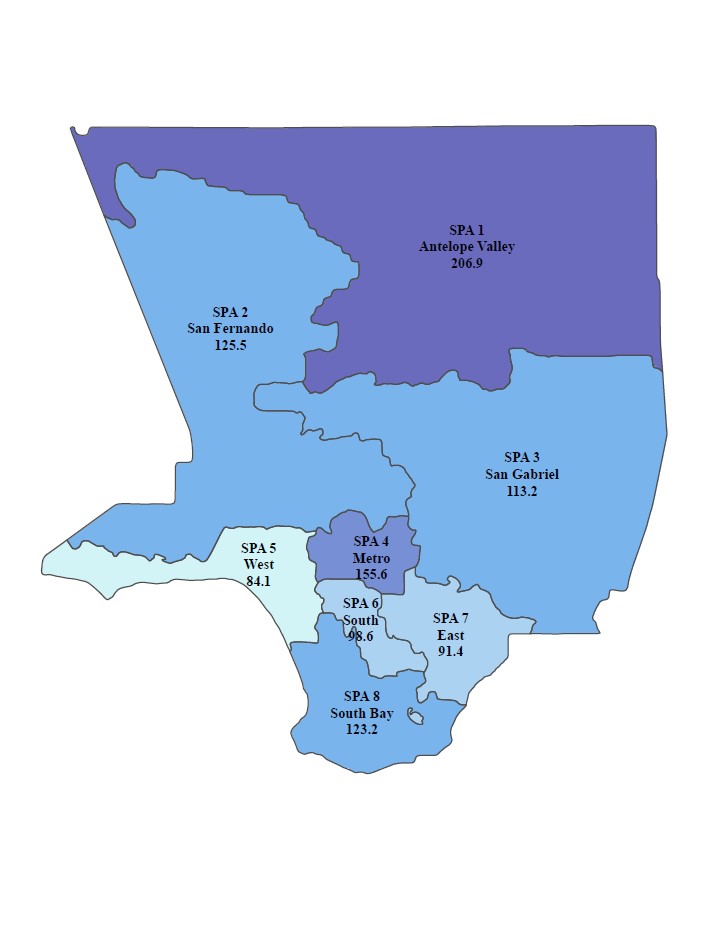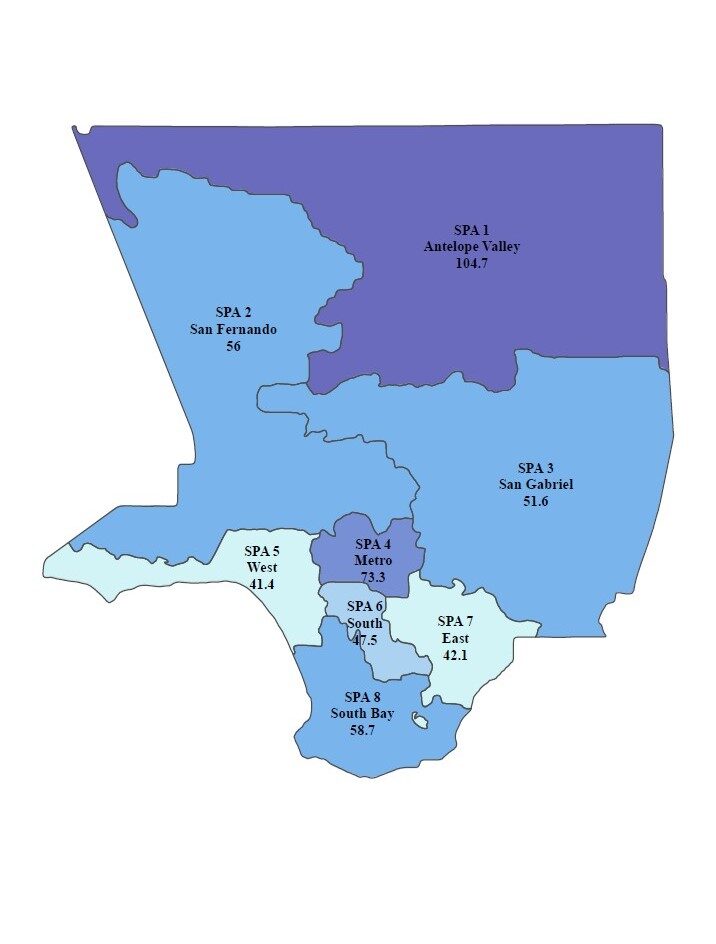Emergency Department Visits
Opioid ED visits in Los Angeles County
According to HCAI data (formerly OSHPD), there were a total of 142,660 emergency department (ED) visits in LAC from 2005 to 2021 that listed opioids as a diagnosis (abuse, dependence, use, or poisoning) or external-cause-of-injury. Opioid-related ED visits increased by 266% from 3,254 in 2005 to 11,924 in 2021 (Figure 1).
About 30% of all opioid-related ED visits listed opioids as the principal diagnosis or principal external-cause-of-injury between 2005 and 2021. Primary opioid ED visits in LAC increased 414% from 1,084 in 2005 to 5,570 in 2021 (Figure 3).
Among ED visits for opioid poisoning that specified opioid type, prescription (Rx) opioids (includes natural/semi-synthetic, methadone, and synthetic opioids) were the most frequently reported opioid type between 2016 and 2021 (Figures 2, 4).
Heroin poisoning ED visits increased from 2005, peaking in 2018, then decreased. Prescription opioids, natural/semi-synthetic, and synthetic opioid poisoning ED visits increased consistently since 2018 for both any mention and primary ED visits (Figures 1, 3).
ED visits by SPA and Opioid Type
The Antelope Valley region (SPA 1) had the highest rates of ED visits for any mention and primary opioids and all opioid poisoning types in 2021 (Figure 5).
Figure 5. Opioid ED visits per 100,000 population by SPA, opioid type, and diagnosis type, LAC, 2021
Source: HCAI
Instructions:
Make a selection at the top of the maps to compare ED visit rates by SPA, opioid type, and diagnosis type.
- Any Mention All Opioids
- Any Mention Heroin
- Any Mention Rx Opioids
- Any Mention Natural/Semi-synthetic
- Any Mention Synthetic
- Any Mention Fentanyl
- Primary All Opioids
- Primary Heroin
- Primary Rx Opioids
- Primary Natural/Semi-synthetic
- Primary Synthetic
- Primary Fentanyl

Any Mention All Opioids
- Primary All Opioids
- Primary Heroin
- Primary Rx Opioids
- Primary Natural/Semi-synthetic
- Primary Synthetic
- Primary Fentanyl
- Any Mention All Opioids
- Any Mention Heroin
- Any Mention Rx Opioids
- Any Mention Natural/Semi-synthetic
- Any Mention Synthetic
- Any Mention Fentanyl

Primary All Opioids
Demographics by Opioid Type
For opioid-, and heroin-, synthetic opioid- , and fentanyl-related poisoning ED visits, younger adults aged 26-34 years accounted for the highest proportion among all age groups during 2016-2021. Natural/semi-synthetic opioid-related poisoning ED visits were highest for older adults aged 65+ (Figures 6, 8).
Similar patterns were seen for primary opioid, and heroin, synthetic opioid, and fentanyl poisoning ED visits, except primary natural/semi-synthetic opioid poisoning ED visits were not higher for older adults aged 65+ (Figures 7, 9).
Males accounted for over half of opioid-related ED visits and for all opioid poisoning types during 2016-2021. Males had a larger majority for heroin- and fentanyl-related poisoning ED visits at around 77%. For natural/semi-synthetic opioid-related poisoning ED visits, the gender distribution was nearly equal (Figures 10, 12).
The male majority was greater for primary opioid-related ED visits for all opioid poisoning types during 2016-2021 (Figures 11, 13).
For natural/semi-synthetic opioid poisoning, increases after 2018 were driven by males for both any mention and primary ED visits (Figures 12, 13).
Whites had the highest proportions of opioid-related ED visits and for all opioid poisoning types during 2016-2021. Primary opioid ED visits and all opioid poisoning types closely followed the same pattern as the any mention ED visits (Figures 14-15).
Among Whites, opioid-related ED visits increased until 2016, then decreased markedly due to decreases in heroin-related poisoning ED visits with a relatively small uptick in 2021 mostly driven by synthetic opioid poisoning. In contrast, opioid-related ED visits among Latinxs increased relatively consistently since 2005. Primary opioid ED visits followed a similar pattern, with Latinxs surpassing Whites in 2021 (Figures 16-17).
References
Figures 1-17. Department of Health Care Access and Information (HCAI, formally OSHPD). Nonpublic Inpatient Discharge and Emergency Department data, 2005-2021. California Department of Public Health. Note: Based on diagnoses and external-cause of injury listing any ICD code for opioid abuse, dependence, use, or poisoning. ICD codes for all intents and encounters were included, “in remission” were excluded.


